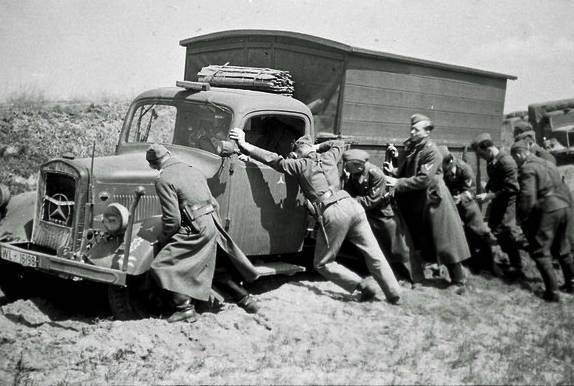How could the USSR beat Nazi Germany but not the Mujahideen in Afghanistan? The reasons behind the different outcomes for the Soviet Union in World War II against Nazi Germany and in the Afghan-Soviet War against the Mujahideen are complex and multifaceted:
Military Tactics and Strategies:
In World War II, the Soviet Union employed massive military forces, innovative tactics, and strategic planning to ultimately defeat Nazi Germany. However, in Afghanistan, the Soviet military faced guerrilla warfare tactics from the Mujahideen, which were significantly different from the conventional warfare tactics used by the Germans. Guerrilla warfare, with its focus on hit-and-run attacks and blending into the civilian population, proved difficult for the Soviet military, which was more accustomed to traditional warfare.
Terrain and Geography:
The vast and rugged terrain of Afghanistan provided natural advantages to the Mujahideen, who were familiar with the landscape and could easily conduct hit-and-run attacks, ambushes, and retreats in the mountains, deserts, and rural areas. This terrain neutralized many of the advantages that the Soviet military possessed in terms of equipment and manpower.
External Support to the Opposition:
During World War II, the Soviet Union benefited from significant external support from Allied powers, including the United States, Britain, and others, in terms of lend-lease assistance, military aid, and strategic coordination. In contrast, during the Afghan-Soviet War, the Mujahideen received substantial support from external actors, including the United States, Saudi Arabia, and Pakistan, in the form of weapons, funding, training, and intelligence, which bolstered their resistance against the Soviet occupation.
Political and Ideological Factors:
In World War II, the Soviet Union was fighting against Nazi Germany, a regime viewed universally as oppressive and expansionist. This garnered significant support and solidarity from both within the Soviet Union and from its allies abroad. However, in Afghanistan, the Soviet intervention was seen as an invasion by many Afghans, leading to widespread resistance and insurgency against the Soviet forces.
Economic Strain and Internal Dissent:
The prolonged conflict in Afghanistan placed a considerable economic and social strain on the Soviet Union. The cost of the war, both in terms of financial resources and human lives, contributed to growing discontent within the Soviet Union. In contrast, during World War II, while the Soviet Union faced significant economic challenges, the perceived existential threat posed by Nazi Germany helped rally public support and cohesion.
Decentralized and Fragmented Opposition:
The Mujahideen in Afghanistan were a diverse and decentralized group, consisting of various tribal, ethnic, and ideological factions. This fragmentation made it difficult for the Soviet Union to effectively counter the insurgency, as there was no single unified leadership to negotiate with or defeat.
In summary, the different outcomes between the Soviet Union’s victory over Nazi Germany in World War II and its failure in Afghanistan against the Mujahideen can be attributed to a combination of military, geopolitical, economic, and ideological factors, as well as the unique challenges posed by guerrilla warfare and the terrain of Afghanistan.


